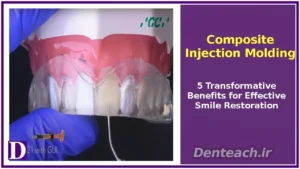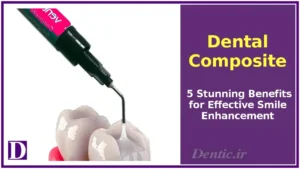
Table of Contents


Composite Injection Molding: 5 Transformative Benefits for Effective Smile Restoration

Dental Composite: 5 Stunning Benefits for Effective Smile Enhancement

Teeth Bleaching: 5 Radiant Benefits for Effective Smile Brightening

Dental Veneer: 5 Stunning Benefits for Effective Smile Enhancement

Implant-Supported Fixed Prostheses: 5 Advanced Benefits for Effective Smile Restoration
Dental bonding is a cosmetic dentistry procedure that involves the application of a tooth-colored resin material to repair or enhance the appearance of a tooth. It is a versatile and non-invasive technique that can address various dental issues, such as chipped or cracked teeth, discoloration, gaps between teeth, and minor misalignments. Here are key aspects of dental bonding:

-
Procedure:
- Preparation: The tooth’s surface is prepared by roughening it slightly, and a conditioning liquid is applied to help the bonding material adhere.
- Application of Bonding Material: A tooth-colored composite resin, matched to the natural shade of the tooth, is applied to the prepared tooth.
- Shaping and Molding: The dentist sculpts and molds the resin to the desired shape, ensuring it blends seamlessly with the natural tooth structure.
- Curing: A special light is used to harden or cure the resin. This process bonds the material to the tooth surface.
- Final Adjustments: After curing, the dentist makes final adjustments, such as trimming and polishing, to achieve the desired shape and appearance.
-
Indications for Dental Bonding:
- Repair of Chipped or Cracked Teeth: Bonding can effectively restore teeth with minor chips or cracks.
- Tooth Discoloration: It can be used to cover or mask discolored teeth, providing a more aesthetically pleasing appearance.
- Closing Gaps: Dental bonding can close small gaps or spaces between teeth.
- Cosmetic Reshaping: It is suitable for minor reshaping of teeth to improve their symmetry and appearance.
- Protection of Exposed Tooth Roots: In cases of gum recession, bonding can cover and protect exposed tooth roots.
-
Advantages of Dental Bonding:
- Conservative Approach: Bonding is a less invasive alternative to procedures like veneers or crowns, as it requires minimal removal of tooth structure.
- Quick and Painless: The procedure is typically completed in a single visit and is generally painless.
- Cost-Effective: Dental bonding is often more cost-effective than other cosmetic dental procedures.
-
Limitations:
- Durability: While durable, dental bonding may not be as resistant to staining or wear as other restorative materials like porcelain.
- Not Suitable for Extensive Damage: Bonding is most effective for minor to moderate cosmetic issues; for more extensive damage, other restorative options may be recommended.
-
Care and Maintenance:
- Oral Hygiene: Good oral hygiene practices, including regular brushing and flossing, are essential to maintain the longevity of the bonding material.
- Avoiding Staining Substances: Patients are advised to minimize consumption of staining substances such as coffee, tea, and tobacco to prevent discoloration.
Dental bonding is a versatile and effective cosmetic solution that can enhance the appearance of teeth with various imperfections. While it may not be suitable for all cases, it is a valuable option for those seeking a conservative and quick improvement in their smile. Individuals interested in dental bonding should consult with their dentist to determine its suitability for their specific dental needs.
